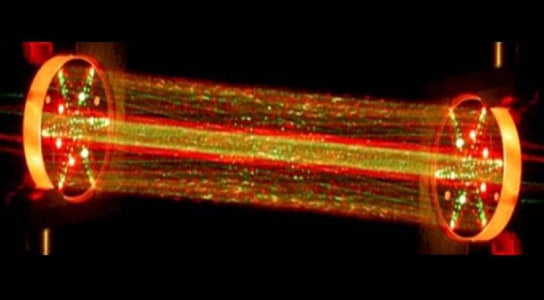
This picture shows a lab demonstration of the measurement chamber inside the Tunable Laser Spectrometer, an instrument that is part of the Sample Analysis at Mars investigation on NASA’s Curiosity rover. This demonstration uses visible lasers – rather than the infrared ones on the actual spectrometer – to show how the lasers bounce between the mirrors in the measurement chamber.
The TLS shoots laser beams into a type of measurement chamber that can be filled with Mars air. By measuring the absorption of light at specific wavelengths, the tool can measure concentrations of methane, carbon dioxide and water vapor in the Martian atmosphere and different isotopes of those gases. Credit: NASA/JPL-Caltech
To the surprise of many researchers, NASA’s Curiosity rover has failed to detect methane on Mars.
Data from NASA’s Curiosity rover has revealed the Martian environment lacks methane. This is a surprise to researchers because previous data reported by U.S. and international scientists indicated positive detections.
The roving laboratory performed extensive tests to search for traces of Martian methane. Whether the Martian atmosphere contains traces of the gas has been a question of high interest for years because methane could be a potential sign of life, although it also can be produced without biology.
“This important result will help direct our efforts to examine the possibility of life on Mars,” said Michael Meyer, NASA’s lead scientist for Mars exploration. “It reduces the probability of current methane-producing Martian microbes, but this addresses only one type of microbial metabolism. As we know, there are many types of terrestrial microbes that don’t generate methane.”
Curiosity analyzed samples of the Martian atmosphere for methane six times from October 2012 through June and detected none. Given the sensitivity of the instrument used, the Tunable Laser Spectrometer, and not detecting the gas, scientists calculate the amount of methane in the Martian atmosphere today must be no more than 1.3 parts per billion. That is about one-sixth as much as some earlier estimates. Details of the findings appear in the journal Science Express.
“It would have been exciting to find methane, but we have high confidence in our measurements, and the progress in expanding knowledge is what’s really important,” said the report’s lead author, Chris Webster of NASA’s Jet Propulsion Laboratory in Pasadena, California. “We measured repeatedly from Martian spring to late summer, but with no detection of methane.”
Webster is the lead scientist for the spectrometer, which is part of Curiosity’s Sample Analysis at Mars (SAM) laboratory. It can be tuned specifically for detection of trace methane. The laboratory also can concentrate any methane to increase the gas’ ability to be detected. The rover team will use this method to check for methane at concentrations well below 1 part per billion.
Methane, the most abundant hydrocarbon in our solar system, has one carbon atom bound to four hydrogen atoms in each molecule. Previous reports of localized methane concentrations up to 45 parts per billion on Mars, which sparked interest in the possibility of a biological source on Mars, were based on observations from Earth and from orbit around Mars. However, the measurements from Curiosity are not consistent with such concentrations, even if the methane had dispersed globally.
“There’s no known way for methane to disappear quickly from the atmosphere,” said one of the paper’s co-authors, Sushil Atreya of the University of Michigan, Ann Arbor. “Methane is persistent. It would last for hundreds of years in the Martian atmosphere. Without a way to take it out of the atmosphere quicker, our measurements indicate there cannot be much methane being put into the atmosphere by any mechanism, whether biology, geology, or by ultraviolet degradation of organics delivered by the fall of meteorites or interplanetary dust particles.”
The highest concentration of methane that could be present without being detected by Curiosity’s measurements so far would amount to no more than 10 to 20 tons per year of methane entering the Martian atmosphere, Atreya estimated. That is about 50 million times less than the rate of methane entering Earth’s atmosphere.
Reference: “Low Upper Limit to Methane Abundance on Mars” by Christopher R. Webster, Paul R. Mahaffy, Sushil K. Atreya, Gregory J. Flesch, Kenneth A. Farley, MSL Science Team, Osku Kemppinen, Nathan Bridges, Jeffrey R. Johnson, Michelle Minitti, David Cremers, James F. Bell, III, Lauren Edgar, Jack Farmer, Austin Godber, Meenakshi Wadhwa, Danika Wellington, Ian McEwan, Claire Newman, Mark Richardson, Antoine Charpentier, Laurent Peret, Penelope King, Jennifer Blank, Gerald Weigle, Mariek Schmidt, Shuai Li, Ralph Milliken, Kevin Robertson, Vivian Sun, Michael Baker, Christopher Edwards, Bethany Ehlmann, Kenneth Farley, Jennifer Griffes, John Grotzinger, Hayden Miller, Megan Newcombe, Cedric Pilorget, Melissa Rice, Kirsten Siebach, Katie Stack, Edward Stolper, Claude Brunet, Victoria Hipkin, Richard Léveillé, Geneviève Marchand, Pablo Sobrón Sánchez, Laurent Favot, George Cody, Andrew Steele, Lorenzo Flückiger, David Lees, Ara Nefian, Mildred Martin, Marc Gailhanou, Frances Westall, Guy Israël, Christophe Agard, Julien Baroukh, Christophe Donny, Alain Gaboriaud, Philippe Guillemot, Vivian Lafaille, Eric Lorigny, Alexis Paillet, René Pérez, Muriel Saccoccio, Charles Yana, Carlos Armiens‐Aparicio, Javier Caride Rodríguez, Isaías Carrasco Blázquez, Felipe Gómez Gómez, Javier Gómez Elvira, Sebastian Hettrich, Alain Lepinette Malvitte, Mercedes Marín Jiménez, Jesús Martínez-Frías, Javier Martín Soler, F. Javier Martín-Torres, Antonio Molina Jurado, Luis Mora-Sotomayor, Guillermo Muñoz Caro, Sara Navarro López, Verónica Peinado-González, Jorge Pla-García, José Antonio Rodriguez Manfredi, Julio José Romeral-Planelló, Sara Alejandra Sans Fuentes, Eduardo Sebastian Martinez, Josefina Torres Redondo, Roser Urqui-O’Callaghan, María-Paz Zorzano Mier, Steve Chipera, Jean-Luc Lacour, Patrick Mauchien, Jean-Baptiste Sirven, Heidi Manning, Alberto Fairén, Alexander Hayes, Jonathan Joseph, Steven Squyres, Robert Sullivan, Peter Thomas, Audrey Dupont, Angela Lundberg, Noureddine Melikechi, Alissa Mezzacappa, Julia DeMarines, David Grinspoon, Günther Reitz, Benito Prats, Evgeny Atlaskin, Maria Genzer, Ari-Matti Harri, Harri Haukka, Henrik Kahanpää, Janne Kauhanen, Osku Kemppinen, Mark Paton, Jouni Polkko, Walter Schmidt, Tero Siili, Cécile Fabre, James Wray, Mary Beth Wilhelm, Franck Poitrasson, Kiran Patel, Stephen Gorevan, Stephen Indyk, Gale Paulsen, Sanjeev Gupta, David Bish, Juergen Schieber, Brigitte Gondet, Yves Langevin, Claude Geffroy, David Baratoux, Gilles Berger, Alain Cros, Claude d’Uston, Olivier Forni, Olivier Gasnault, Jérémie Lasue, Qiu-Mei Lee, Sylvestre Maurice, Pierre-Yves Meslin, Etienne Pallier, Yann Parot, Patrick Pinet, Susanne Schröder, Mike Toplis, Éric Lewin, Will Brunner, Ezat Heydari, Cherie Achilles, Dorothy Oehler, Brad Sutter, Michel Cabane, David Coscia, Guy Israël, Cyril Szopa, Gilles Dromart, François Robert, Violaine Sautter, Stéphane Le Mouélic, Nicolas Mangold, Marion Nachon, Arnaud Buch, Fabien Stalport, Patrice Coll, Pascaline François, François Raulin, Samuel Teinturier, James Cameron, Sam Clegg, Agnès Cousin, Dorothea DeLapp, Robert Dingler, Ryan Steele Jackson, Stephen Johnstone, Nina Lanza, Cynthia Little, Tony Nelson, Roger C. Wiens, Richard B. Williams, Andrea Jones, Laurel Kirkland, Allan Treiman, Burt Baker, Bruce Cantor, Michael Caplinger, Scott Davis, Brian Duston, Kenneth Edgett, Donald Fay, Craig Hardgrove, David Harker, Paul Herrera, Elsa Jensen, Megan R. Kennedy, Gillian Krezoski, Daniel Krysak, Leslie Lipkaman, Michael Malin, Elaina McCartney, Sean McNair, Brian Nixon, Liliya Posiolova, Michael Ravine, Andrew Salamon, Lee Saper, Kevin Stoiber, Kimberley Supulver, Jason Van Beek, Tessa Van Beek, Robert Zimdar, Katherine Louise French, Karl Iagnemma, Kristen Miller, Roger Summons, Fred Goesmann, Walter Goetz, Stubbe Hviid, Micah Johnson, Matthew Lefavor, Eric Lyness, Elly Breves, M. Darby Dyar, Caleb Fassett, David F. Blake, Thomas Bristow, David DesMarais, Laurence Edwards, Robert Haberle, Tori Hoehler, Jeff Hollingsworth, Melinda Kahre, Leslie Keely, Christopher McKay, Mary Beth Wilhelm, Lora Bleacher, William Brinckerhoff, David Choi, Pamela Conrad, Jason P. Dworkin, Jennifer Eigenbrode, Melissa Floyd, Caroline Freissinet, James Garvin, Daniel Glavin, Daniel Harpold, Andrea Jones, Paul Mahaffy, David K. Martin, Amy McAdam, Alexander Pavlov, Eric Raaen, Michael D. Smith, Jennifer Stern, Florence Tan, Melissa Trainer, Michael Meyer, Arik Posner, Mary Voytek, Robert C. Anderson, Andrew Aubrey, Luther W. Beegle, Alberto Behar, Diana Blaney, David Brinza, Fred Calef, Lance Christensen, Joy A. Crisp, Lauren DeFlores, Bethany Ehlmann, Jason Feldman, Sabrina Feldman, Gregory Flesch, Joel Hurowitz, Insoo Jun, Didier Keymeulen, Justin Maki, Michael Mischna, John Michael Morookian, Timothy Parker, Betina Pavri, Marcel Schoppers, Aaron Sengstacken, John J. Simmonds, Nicole Spanovich, Manuel de la Torre Juarez, Ashwin R. Vasavada, Christopher R. Webster, Albert Yen, Paul Douglas Archer, Francis Cucinotta, John H. Jones, Douglas Ming, Richard V. Morris, Paul Niles, Elizabeth Rampe, Thomas Nolan, Martin Fisk, Leon Radziemski, Bruce Barraclough, Steve Bender, Daniel Berman, Eldar Noe Dobrea, Robert Tokar, David Vaniman, Rebecca M. E. Williams, Aileen Yingst, Kevin Lewis, Laurie Leshin, Timothy Cleghorn, Wesley Huntress, Gérard Manhès, Judy Hudgins, Timothy Olson, Noel Stewart, Philippe Sarrazin, John Grant, Edward Vicenzi, Sharon A. Wilson, Mark Bullock, Bent Ehresmann, Victoria Hamilton, Donald Hassler, Joseph Peterson, Scot Rafkin, Cary Zeitlin, Fedor Fedosov, Dmitry Golovin, Natalya Karpushkina, Alexander Kozyrev, Maxim Litvak, Alexey Malakhov, Igor Mitrofanov, Maxim Mokrousov, Sergey Nikiforov, Vasily Prokhorov, Anton Sanin, Vladislav Tretyakov, Alexey Varenikov, Andrey Vostrukhin, Ruslan Kuzmin, Benton Clark, Michael Wolff, Scott McLennan, Oliver Botta, Darrell Drake, Keri Bean, Mark Lemmon, Susanne P. Schwenzer, Ryan B. Anderson, Kenneth Herkenhoff, Ella Mae Lee, Robert Sucharski, Miguel Ángel de Pablo Hernández, Juan José Blanco Ávalos, Miguel Ramos, Myung-Hee Kim, Charles Malespin, Ianik Plante, Jan-Peter Muller, Rafael Navarro-González, Ryan Ewing, William Boynton, Robert Downs, Mike Fitzgibbon, Karl Harshman, Shaunna Morrison, William Dietrich, Onno Kortmann, Marisa Palucis, Dawn Y. Sumner, Amy Williams, Günter Lugmair, Michael A. Wilson, David Rubin, Bruce Jakosky, Tonci Balic-Zunic, Jens Frydenvang, Jaqueline Kløvgaard Jensen, Kjartan Kinch, Asmus Koefoed, Morten Bo Madsen, Susan Louise Svane Stipp, Nick Boyd, John L. Campbell, Ralf Gellert, Glynis Perrett, Irina Pradler, Scott VanBommel, Samantha Jacob, Tobias Owen, Scott Rowland, Evgeny Atlaskin, Hannu Savijärvi, Eckart Boehm, Stephan Böttcher, Sönke Burmeister, Jingnan Guo, Jan Köhler, César Martín García, Reinhold Mueller-Mellin, Robert Wimmer-Schweingruber, John C. Bridges, Timothy McConnochie, Mehdi Benna, Heather Franz, Hannah Bower, Anna Brunner, Hannah Blau, Thomas Boucher, Marco Carmosino, Sushil Atreya, Harvey Elliott, Douglas Halleaux, Nilton Rennó, Michael Wong, Robert Pepin, Beverley Elliott, John Spray, Lucy Thompson, Suzanne Gordon, Horton Newsom, Ann Ollila, Joshua Williams, Paulo Vasconcelos, Jennifer Bentz, Kenneth Nealson, Radu Popa, Linda C. Kah, Jeffrey Moersch, Christopher Tate, Mackenzie Day, Gary Kocurek, Bernard Hallet, Ronald Sletten, Raymond Francis, Emily McCullough, Ed Cloutis, Inge Loes ten Kate, Ruslan Kuzmin, Raymond Arvidson, Abigail Fraeman, Daniel Scholes, Susan Slavney, Thomas Stein, Jennifer Ward, Jeffrey Berger and John E. Moores, 19 September 2013, Science.
DOI: 10.1126/science.1242902
Curiosity landed inside Gale Crater on Mars in August 2012 and is investigating evidence about habitable environments there. JPL manages the mission and built the rover for NASA’s Science Mission Directorate in Washington. The rover’s Sample Analysis at Mars suite of instruments was developed at NASA’s Goddard Space Flight Center in Greenbelt, Maryland, with instrument contributions from Goddard, JPL, and the University of Paris in France.

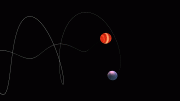
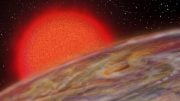
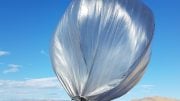

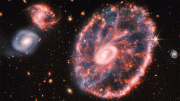
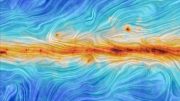
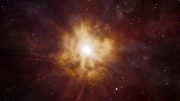
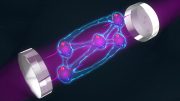
Aha! Although it would be fun to find other life forms, I have considered it unlikely at best that Mars harbours ANY. This also puts a crimp in the theory of panspermia. That is one DEAD planet. Sorry to say, but Curiosity will find rocks, dust, ice and sand. That’s it.